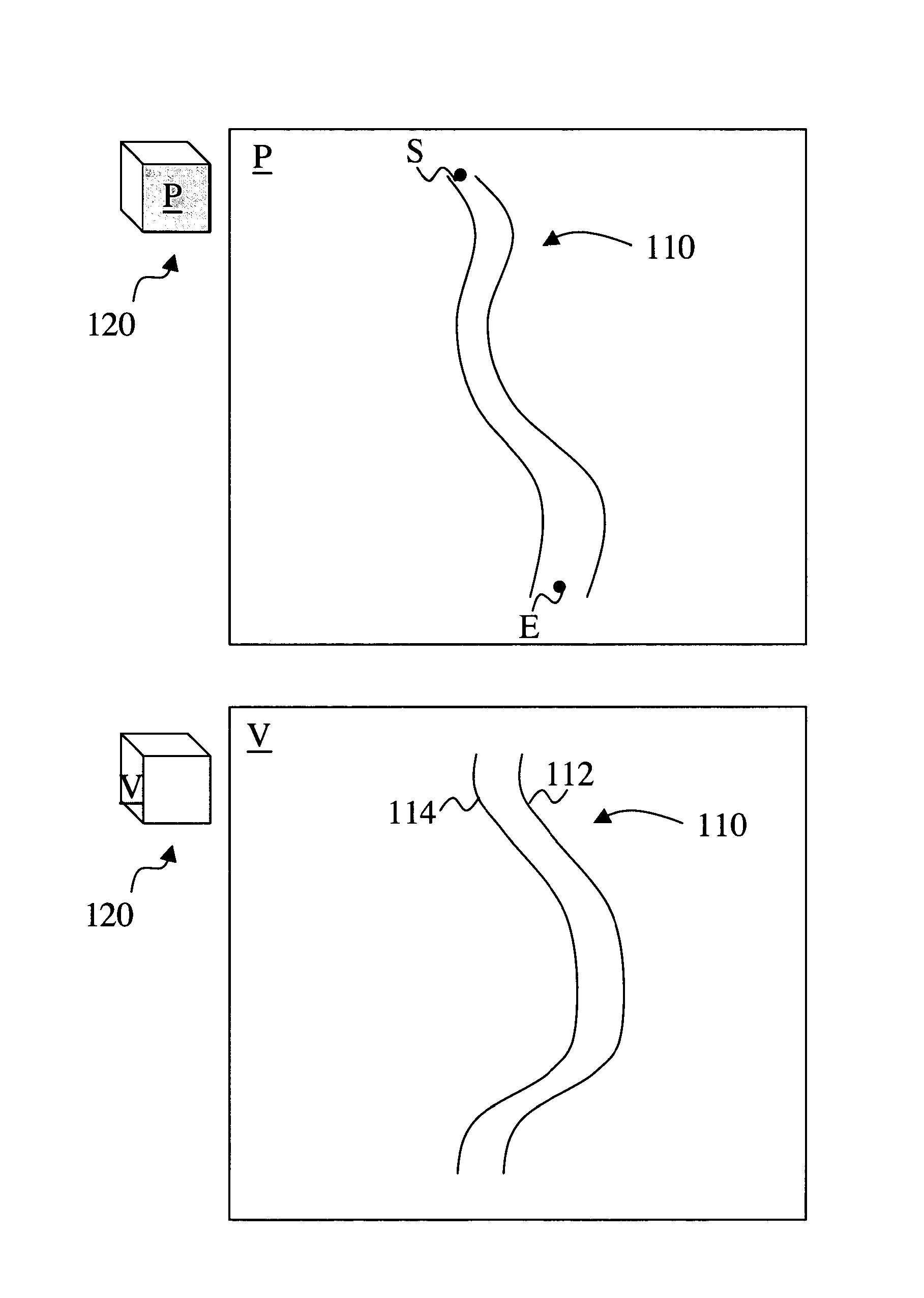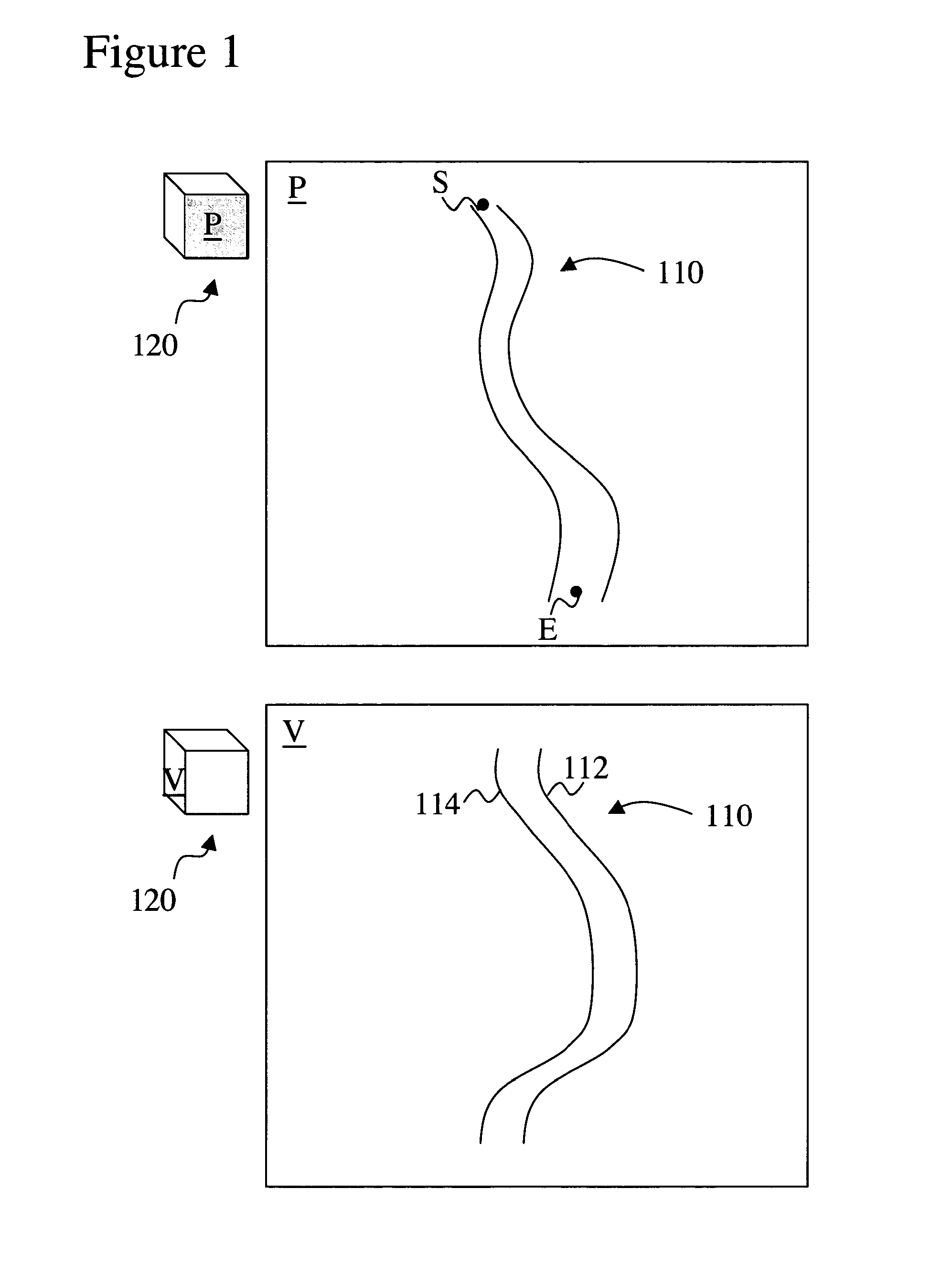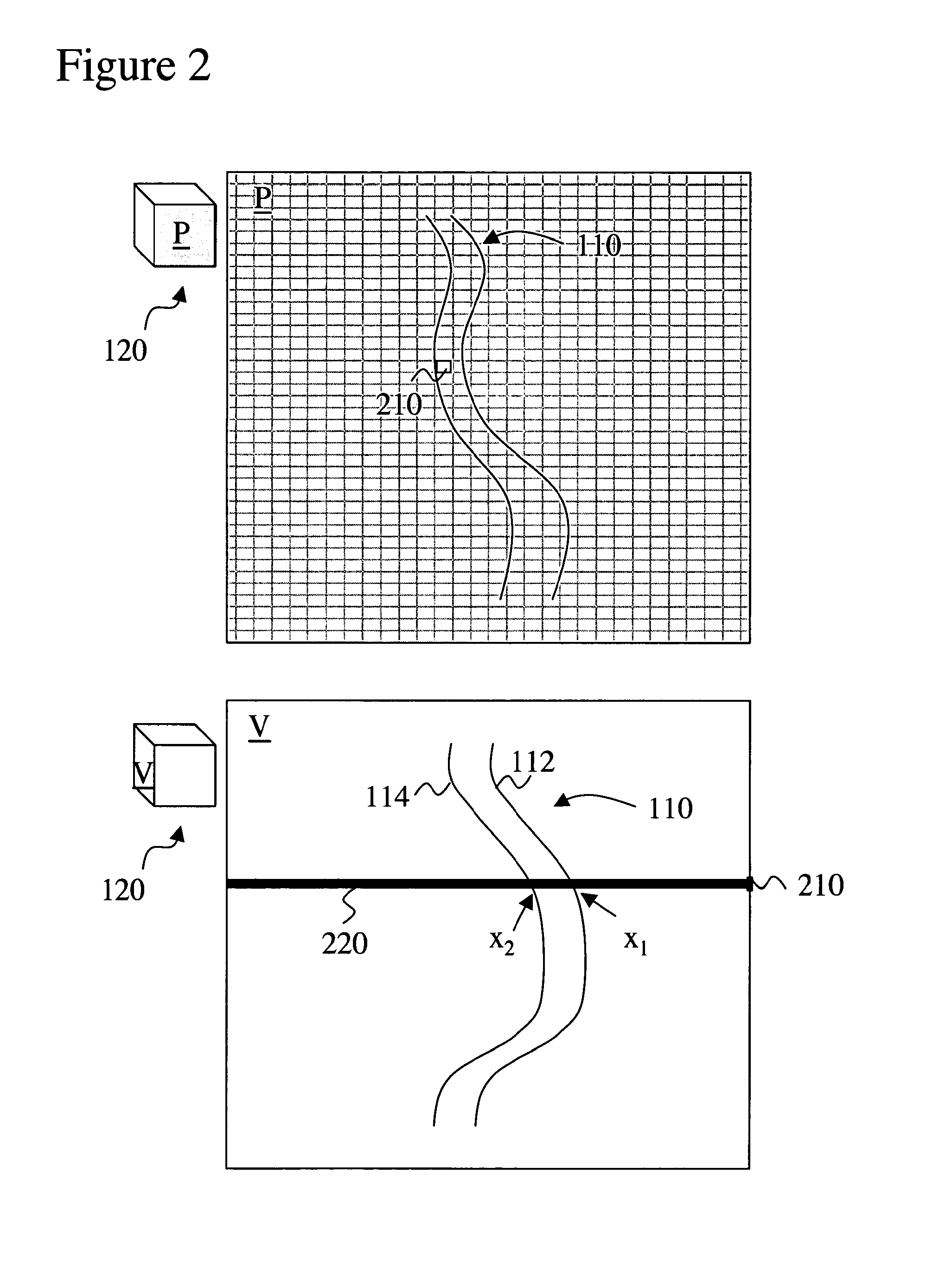Curved-slab maximum intensity projections
a projection and maximum intensity technology, applied in the field of medical imaging, can solve the problems of reduced contrast between vessels and background, difficult to discern three-dimensional vascular anatomy, apparent vessel narrowing, etc., and achieve the effect of reducing background intensity, reducing apparent vessel narrowing, and increasing overall arterial contras
- Summary
- Abstract
- Description
- Claims
- Application Information
AI Technical Summary
Benefits of technology
Problems solved by technology
Method used
Image
Examples
Embodiment Construction
[0026]Although the following detailed description contains many specifics for the purposes of illustration, anyone of ordinary skill in the art will readily appreciate that many variations and alterations to the following exemplary details are within the scope of the invention. Accordingly, the following preferred embodiment of the invention is set forth without any loss of generality to, and without imposing limitations upon, the claimed invention.
[0027]The present invention is a post-processing method for volumetric vascular data sets acquired with CT imaging, MR imaging or any other related imaging technique. The present invention automatically defines a curved slab region of interest (ROI) that only includes one or more vessels while (maximally) excluding surrounding structures such as soft tissue and bone. The thickness of the curved slab is adapted to the thickness of the vessel or in more general terms to the thickness of one or more structures of interest. The curved slab fo...
PUM
 Login to View More
Login to View More Abstract
Description
Claims
Application Information
 Login to View More
Login to View More - R&D
- Intellectual Property
- Life Sciences
- Materials
- Tech Scout
- Unparalleled Data Quality
- Higher Quality Content
- 60% Fewer Hallucinations
Browse by: Latest US Patents, China's latest patents, Technical Efficacy Thesaurus, Application Domain, Technology Topic, Popular Technical Reports.
© 2025 PatSnap. All rights reserved.Legal|Privacy policy|Modern Slavery Act Transparency Statement|Sitemap|About US| Contact US: help@patsnap.com



